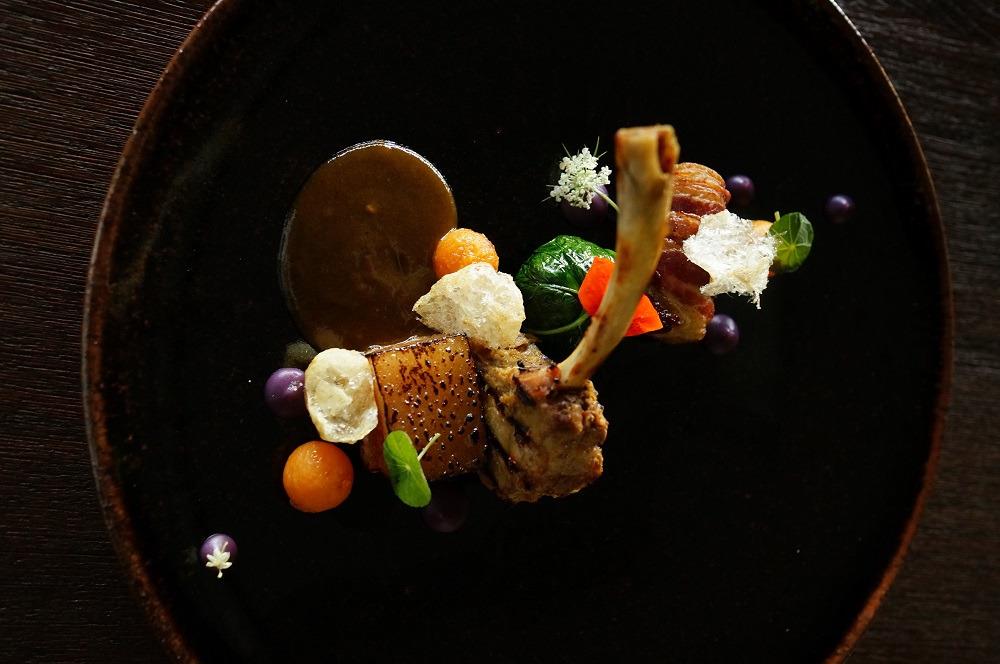The population of Bali’s black pigs are declining. But, there are farmers, butchers and chefs who insist on reviving it.

With its protruding eyes, large red snout, black bristling hair, and four sharp tusks, the four-legged Barong Bangkal menacingly patrols the streets. One could hear it coming from afar because the black boar-shaped Barong is accompanied by a troupe of gamelan instrument players. The loud kendang’s dumdum and kepyak’s céngcéng sounds are mixed with giggles from the team of children and teenagers.
In many villages in Bali, twice a year, between Galungan and Kuningan holidays, the troupe would go around their village, to ward off evil spirits, diseases and negative energy in a dance ritual called Ngelawang. In return, the enthusiastic entertainers would be given some pocket money by grateful residents or shop owners.

Apart from being a symbol of god’s spirit, Barong Bangkal is a testament of the Balinese’s ancestral wisdom about the superior quality of the black pig. Why is it superior?
Traditionally raised for ceremonial purpose or as the family’s emergency saving, the black pig or babi hitam is casually left to forage on its own or being given a diet made of whatever is available. A research done by Budaarsa K, et al. The Exploration of Traditional Bali Pig’s Feed Composition stated that “…it endures hardship well, requires less water, is able to survive despite being fed a little, and suitable to be raised in a dry land. The pigs are usually left under the care of the women in Balinese villages as ‘tatakan banyu’ or a repository of kitchen leftovers. The pig feeds on whatever its owner can afford to give”.
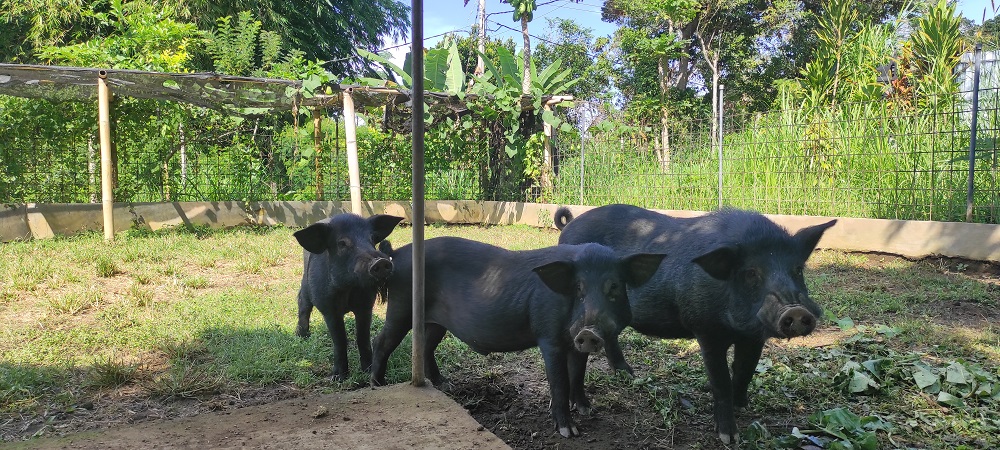
The pig often feeds on dagdag, a mixture of foraged leaves, banana stems, vegetables, fruits, tubers, and rice bran boiled in water. This nutritious porridge empowers the growth of the indigenous Bali black pig (Sus scrofa). Physically, the pig is black in colour with bristling hair, small ears, drooping back, and protruding pot belly that sometimes drag along the ground when it gets too fat or pregnant. It probably would not stand a chance in a beauty contest but would take first place in resilience.
At the end of 2019, the highly infectious African Swine Fever (ASF) was detected in Bali. By the end of 2020, the official number stated that 292,000 pigs were dead or killed as a result – half the population of farmed pigs in Bali. The monetary loss was immense.
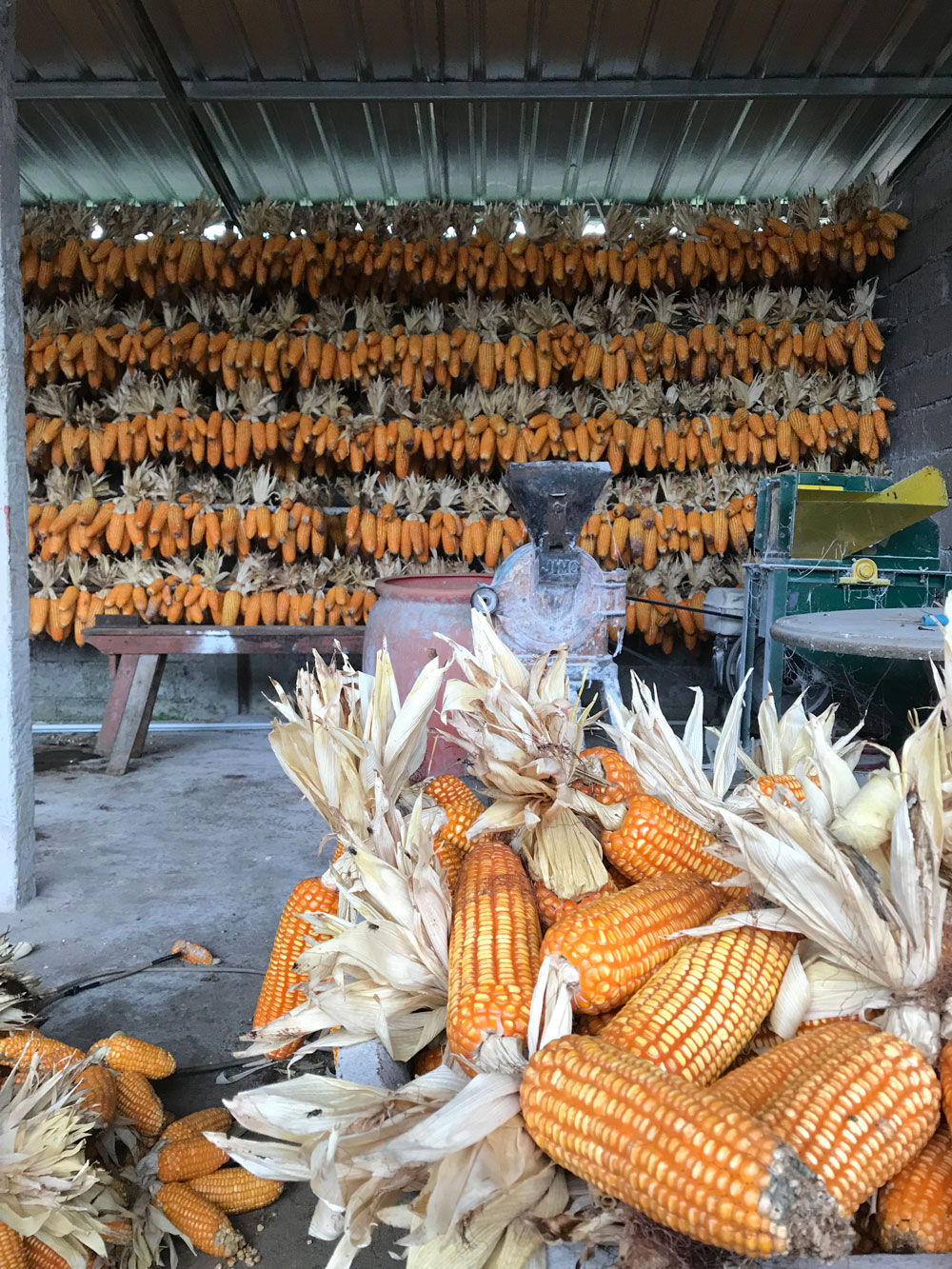
Most of the infected pigs were the factory-farmed pink landrace. Mercifully, the small-scale farm and householdraised black pigs were largely spared. “The way the black pig is raised is the key to its survival. In north Bali, where plenty of small-scale farms and households raise the pigs by feeding them with boiled natural ingredients, we see no significant deaths,” says Gede Kresna. A practicing architect, Kresna is also known for his passion for sustainability and food security activism. He co-founded Koperasi Pangan Bali Utara (North Bali Food Cooperative) and actively reintroducing black pig to the Balinese. “There is an obvious lack of taste reference when it comes to the black pork meat. Many Balinese have never even tasted it. I am sure that once they know the difference, there’s no going back to the regular pork meat,” says Kresna.
A Dying Flavour
Back in the 1950s Bali, pork meat was a luxury that one occasionally enjoyed during ceremonies or other special celebrations. Then, tourism happened and Babi Guling, that opulent offering for the gods, slowly became accessible for mortals.
.jpg)
Ida Bagus Kompyang, the founder of Segara Beach Hotel in Sanur, was cited as the first initiator of “Bali Night”. With its flirtatious joged dance and golden, crackling-skinned Babi Guling, the dinner event immediately charmed Bali’s early visitors. It just took a decade or so before the slowroasted pig is available all day, every day. The demand for pigs started to increase in the 1970s, far above the ability of a small-scale farmer who needed one year to raise a big enough black pig for Babi Guling. The imported landrace pig needed just half the time, so why wait?
Soon, a Babi Guling industry was born. From market stalls in Gianyar to a midnight eatery in Kuta, tourists cannot get enough of the crispy skin, succulent meat and its stuffed base genep spices. Nobody can wait for the black pig to grow, so it does not come as a surprise that the flat-back, pink landrace pigs are dominating the market until today.
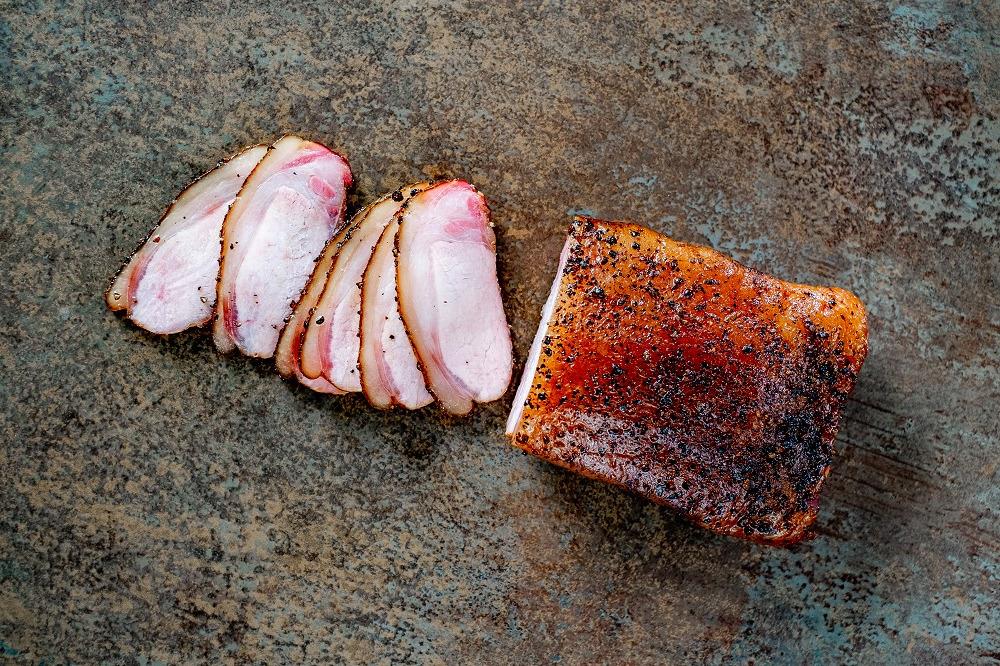
However, George and Jero Melati beg to differ. Under the watchful gaze of Mount Batukaru, the free-range Bali Heritage Pigs farm insists on preserving the indigenous black pigs and raising them in the most sustainable way. For the last three years, the couple and four farmers observe, research and experiment with their bangkal (boar) and bangkung (sow) pigs. “We are in the business of growing the highest quality of pork meat and leaving as minimal carbon footprint as possible,” says the couple.
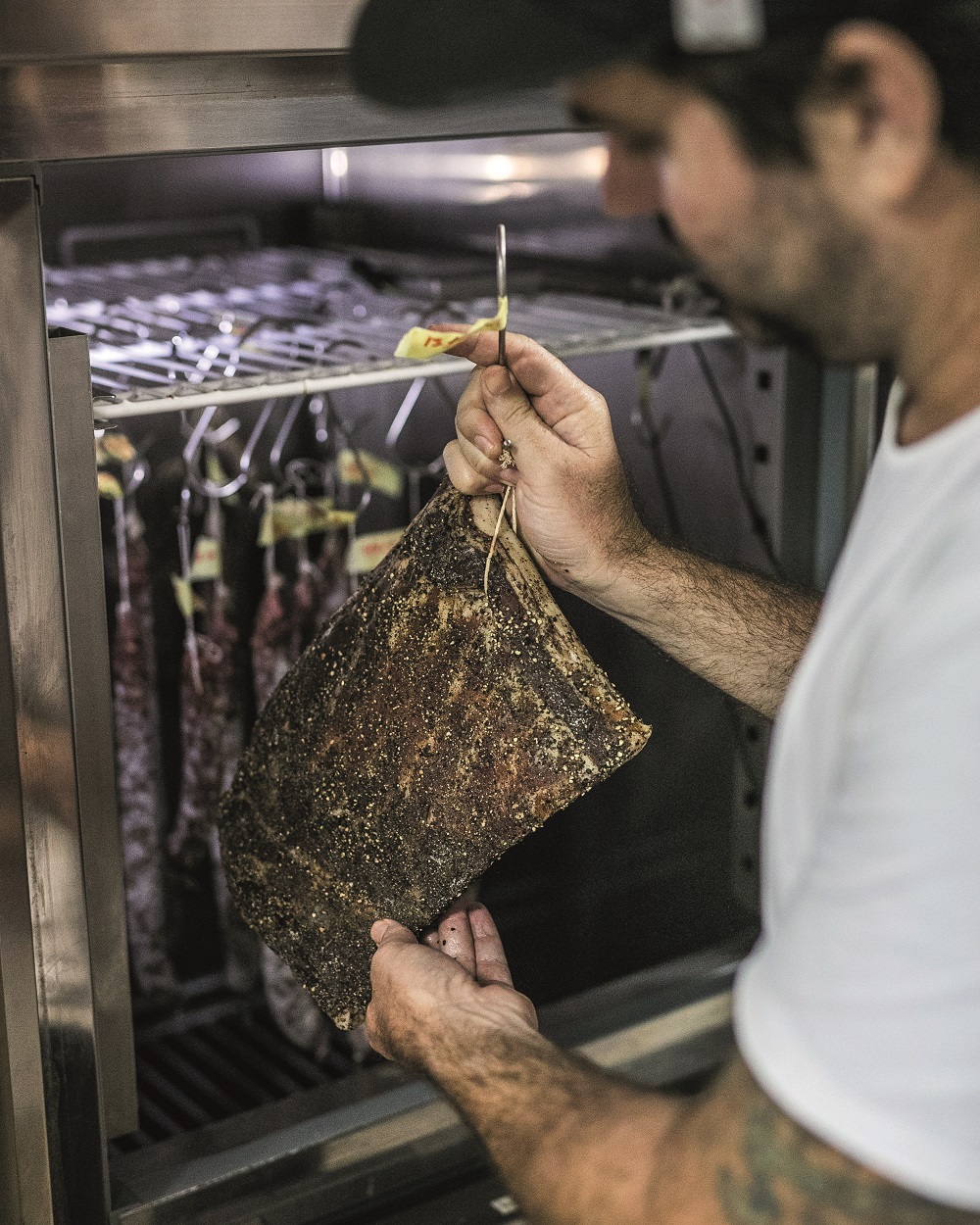
On their idyllic one and a half hectare farm in Baturiti, the black pigs are fed three times a day. The highly nourishing food mixture is made of house-grown papaya, chayote, GMO- and pesticide-free corn, grated coconut fibre, oats, whey, azolla fern, leftover barley from a brewery, and black soldier fly larvae. The larvae are especially rich in protein and fat. It also coincidentally thrives on pig manure, helping the farm get rid of its waste. Water for the happy pigs is triplefiltered from the rainwater catchment system. Each mature black pig has more than enough space to nap, play in the mud or tend to their piglets.
As a small-scale farm, it produces 12 to 15 pigs per month. The farm only sells the whole pig, butchered humanely within its dedicated facility and delivered within a few hours after its slaughter. For parts, they collaborate with Jono’s, an artisan butchery and charcuterie in the south of Bali.
In an attempt to prove that high-quality black pig has its share on the market, Bali Heritage Pigs works closely with discerning chefs, hotels and restaurants in Bali such as Locavore, Raffles Bali and Mason. The flavour profile of the black pig is incomparable to the factory-farmed pig. To put it simply, if provenance, sustainability and flavour are a consideration in consuming pork meat, one needs to look no further than the black pig.
.jpg)
The Good Fat
Initially, what John Becker and Ria Sulistyorini wanted to do was to open a restaurant. Then, the pandemic happened and pivoting was the only option. Focusing on the craft of whole animal butchery and charcuterie, Jono’s was born in September last year. As an American chef in Bali, Becker has had training in New York City’s best kitchens and under world-class chefs such as Alain Ducasse, Michael White and Christopher Lee. However, his passion lies in the art of nose-to-tail butchery, especially when he found out about the slow-growing Balinese black pig.
“We have a chosen network of great Balinese black pig farmers throughout Bali, including the Bali Heritage Pigs farm. The pigs are raised outdoors with a diet of natural food. No commercial pig feed, hormones or antibiotics are given to them. What we hope to create is the demand for this breed and in a roundabout way, increasing its population, as well as encouraging local farmers to return to the old style of natural and ethical farming practices,” explains Becker.
The black pig is a lard-type pig. “It has a thick layer of back fat and shorter body type which guarantees a shorter belly. The back fat is essential in charcuterie,” says Becker. Working on 10 to 15 months old black pigs, he uses the best meat for fresh cuts, sausages, bacon, and ham. The head and cheek goes to deli cuts such as porchetta di testa and guanciale. Bones and feet are turned into concentrated double bone broth.
Within one year, Jono’s artisanal products are being served in Bali, Jakarta and Surabaya’s best cafes and fine dining establishments. From fennel and rosemary sausages to drycured bacon, the future of black pig is certainly in good hands.
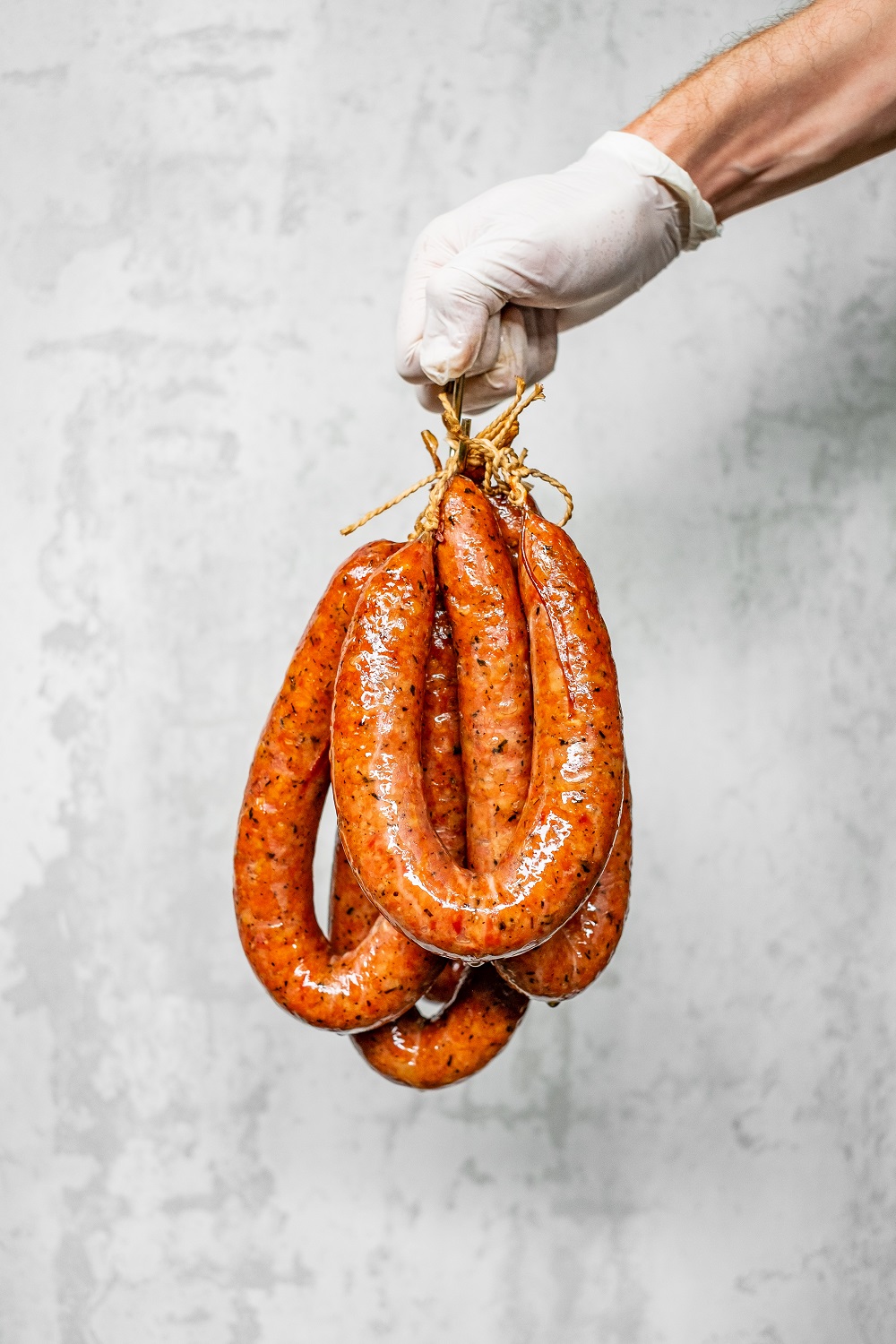
In Praise Of Pork
But, what is it about the black pork meat that makes it special? Chef-owner of Mason, Ben Cross, praises its clean flavour. “The black pig has a very buttery aspect which makes it a beautiful product to work with,” he says. In line with Mason’s outlook in serving simple, high quality, made-from-scratch dishes, the black pig received its welldeserved gourmet veneration in the form of succulent pork loin cooked over charcoal, served with cauliflower puree, compressed apple and vermouth, fried parsley and lemon zest. The rest of the pig is deliciously turned into salami, chorizo, fuet, and an 18-month aged prosciutto.
In Jimbaran, up on its perch overlooking the bay, executive chef Gaetan Biesuz at Rumari has been working his magic on the black pig. Renowned for highlighting locally sourced and artisanal produce, Rumari at Raffles Bali features eight signature dishes on its a la carte menu. From pork terrine to Balinese-inspired spicy urutan sausage, Biesuz has been a big fan of the black pig and Bali Heritage Pigs’ husbandry. “The diet given to the pigs on the farm just doesn’t lie. Every part is good to eat or can be cook really well,” says Biesuz. There is one particular homage which stood out from the rest: a dish made of Plaga chili stuffed with braised pork, served with corn, sweet potato and chayote. The same diet that was given to the pig in the farm during its life also nourishes the guest. If that’s not a sign of respect, nothing is.
